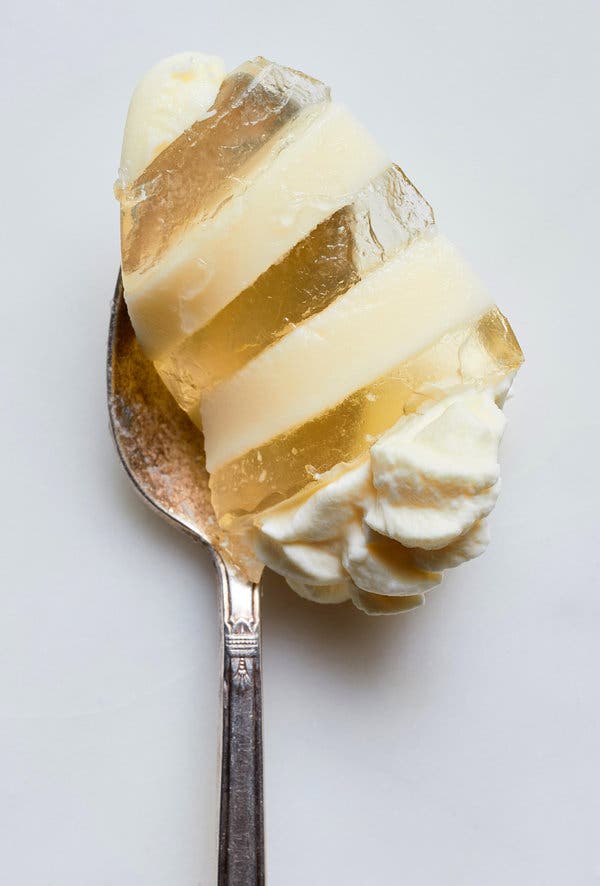There was a guy named Eddie in my weeklong summer rental share this year who devoted one whole precious vacation day to making mole: hours of frying and dry-toasting and steeping and then wiping up the splatters. The other housemates wandered in and out from the deck or the beach where they’d been, doing a fat load of nothing: dozing in their chairs, people-watching, their books open but unread on their laps. A few sprints into the invigorating Atlantic surf punctuated their naps, during which they lovingly admired Eddie and looked forward to dinner.

This tart, creamy and downright joyful lemon parfait is for those of us who identify more with the Eddies of the world — vacation mole makers unite! — and who think of summer as a chance to finally focus on that complex project we’ve had pinned to our mood board all winter. But there’s a little something here for everyone. The lemon-soda gelatin and the buttermilk-flavored one — the “batters,” I guess you could call them — largely conform to the breezy messaging of summer magazine covers; they are, in fact, “lazy” and “easy” to make. But the parfaits themselves, gorgeous columns of sliver-thin layers that take time and attention to build, are for those of us who think a beach vacation is the best time to finally read “Anna Karenina” all the way through.
Frat boys have been making Jell-O shots successfully for decades using commercial packets, following the unfailing ratio of one packet to two cups liquid. For the keep-it-simple summer crew who will be several bloody marys in when they try this, there’s a fail-proof ratio for homemade gelatin too: Three tablespoons of plain gelatin will reliably set three cups of liquid.
If, however, you’re the ranging, studious type, you’ll be glad to discover that three tablespoons to three cups is only a starting point, a reliable route to the jiggles. Nuances and complexities are available to those inclined to tinker with the firmness and the tenderness of their gelatin. Dairy brings its own sturdy structure to the equation and sets up with gelatin more stiffly than clear fruit juices, like grape or raspberry. Strawberry, with its lower pectin level, will set less firmly than lemon. Pineapple, meanwhile, won’t really set at all, because of its enzymes.
This parfait gets its pucker from that sour tang of buttermilk and, of course, the lemon juice. But there is an extra zinger: Carbonated soda water in place of still tap water creates effervescence in the mouth. You plunge your spoon down through the wobbly layers expecting a creamy, tender mouthful, and instead it nearly buzzes on the tongue — like the exhilarating miracle of swallowing a bee before it has a chance to sting you.
If this kind of total-immersion project makes you instantly fall asleep in your beach chair just reading about it, maybe you’d prefer to try it during the work year, when you are already upright, wearing shoes. No sweat. Lemon and buttermilk are both readily available in winter. Tear this page out, and save it for later. It straddles seasons as well as temperaments. But if you’re the kind of person who gleefully packs four different types of dried chiles in your weekend bag before running to catch the ferry, make it now, before the demands of the year begin their onslaught. You’ll still be done in time for a swim before dinner.
Recipe: Lemon-Soda-Buttermilk Parfait




